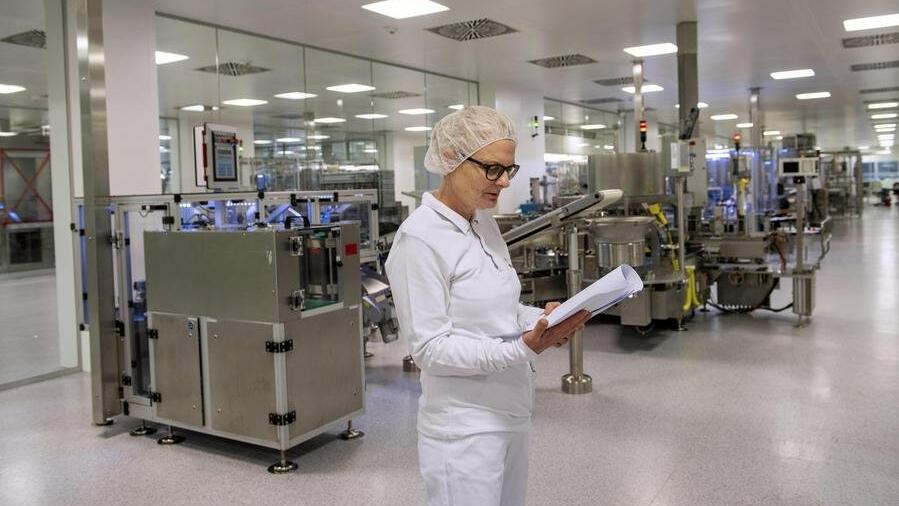
Parenteral products have become one of the most important innovation and growth drivers in the biopharma industry. But as drug developers race to meet the world’s demand for injectable products, the market they’re seeking to capture is changing just as fast.
The trend toward home-based care – which emerged pre-COVID-19 and was accelerated by the pandemic – has transformed the target profile for a high-value injectable drug. Today’s global market isn’t simply demanding more effective parenteral therapies – it’s looking for convenient, self-administered products that offer an easy, safe, adherence-supporting delivery experience.
For many organizations, this shift has put increasing focus on launching their products in an autoinjector, pen, wearable, or other delivery device. This launch can be one of the most technically-demanding pivots in the product life cycle – one that combines the unique complexities of both aseptic fill-finish and device assembly. But it’s also an increasingly vital step for drug developers who want to maximize the value of their product.

The market is eager for products that deliver not only therapeutic benefits, but also an easy, safe, adherence-supporting delivery experience.
Markus Hoerburger, Product- and Servicemanager
So, how can your team lay the groundwork for a successful combination product launch? Start with these 5 important factors.
Factor 1: Market variables
Today’s new injectable products are launching into an increasingly crowded global formulary – one filled with innovative new molecules and fueled by surging global demand. To ensure success, drug developers’ life cycle strategies need to not only deliver new markets but do so in a way that maximizes product differentiation over time.
Shifting from a vial or syringe to a delivery device is an increasingly important step in those strategies. So which configuration is right for your product? The answer starts with a deep understanding of your target users and their needs, including:
- Who is administering your product (patient vs. healthcare professional)?
- What functionality is needed for safe and consistent administration?
- What level of convenience is required to differentiate your product’s performance?
A key challenge: the answer to each question often shifts from market to market. Regional patient populations differ substantially in their average age, education level, health coverage, and typical care setting – variables that can have a major impact on what they value in an injectable therapy. Also, different regions often have very different requirements for the way in which injectable treatments are packaged and presented to patients.
The result: Addressing the unique dynamics of every target market can often transform a single product launch into a mosaic of smaller, country-specific manufacturing batches – each optimized for a different use case, regional patient need, or local regulatory framework. The earlier you acknowledge this in your budgets, timelines, and CDMO partnerships, the better able you’ll be to navigate these complexities from the start.

Factor 2: Regulatory considerations
When you transition your product to a delivery device, very different compliance considerations come into play. For instance, both the US and EU have recently established specific regulatory frameworks for parenteral products launched in device systems:
Combination products in the US
Under 21CFR4, both drug product cGMP regulations and medical devices quality system regulations apply. For single-use products like autoinjectors or pens, there are typically two ways to comply:
- Meet both the drug cGMP regulations and the medical devices quality system regulations.
- Select a quality system that demonstrates compliance with either the drug cGMP regulations or the medical devices quality system regulations, then supplement it with the additional requirements from the other quality system.
Drug-device combinations in the EU
Article 1(8) of the EU’s Medical Devices Regulation covers products that combine a device and a medicinal substance. It defines different quality system requirements depending on each component’s “role of action”:
- If the device has the primary role (e.g., catheters coated with an antibiotic agent), the EU’s Medical Devices Regulation (MDR) applies. The product needs CE marking.
- If the medicinal substance has the primary role (e.g., single-use autoinjectors or pens), both the medicinal product framework and the relevant requirements of Annex I of the MDR apply.
- Article 1(9) MDR is also important for EU launches. It establishes the regulatory framework for medical devices intended to administer medicinal products.
No matter where you plan to launch your product, make sure you allow sufficient time and source the right expertise to help you successfully manage these critical regulations.
Factor 3: Technical considerations
Integrating an injectable drug and a delivery device is a technically-complex process - one that requires careful management of the interplay between multiple different aspects of both drug product and device. Keep these factors in mind:
- Primary packaging: Whether you plan to launch in a syringe-based autoinjector or a cartridge-based pen, the format, design, and shape of your primary packaging can have a big downstream impact on your device assembly options.
- Product indication: Both product viscosity and dose volume can have a direct impact on the design and functionality of the delivery device you need.
- Device system and assembly specifics: Consider what you need to establish a process, including the materials and parts you need to source, packaging, testing requirements, and assembly steps.
- Secondary packaging: Autoinjectors, pens, and safety devices all raise different considerations when it comes to assembly processes, testing methods, label placement, and serialization.
Factor 4: Sustainability developments
The pharmaceutical industry accounts for as much as 10% of the carbon footprint in the US and 5% globally – bigger than the automotive industry.1 As more and more organizations have become aware of their ecological impact, many of these companies are actively developing and deploying sustainability initiatives across the value chain.
Market forces are also driving these developments. Demand for “green” biopharma solutions is increasing rapidly, including:
- Sustainable materials: Shifting from conventional plastics and manufacturing processes to less water- and energy-intensive alternatives.
- Reusable devices: Developing technologies that reduce waste associated with injectable products and delivery systems.
- Carbon neutrality: Increasing focus on minimizing the carbon footprint across supply chain partners’ operations.

Factor 5: Expert support
As you can see from all these considerations, launching in a delivery device is a technically-, operationally-, and logistically-intensive process which demands a unique kind of know-how, foresight, and proven expertise to manage. For many organizations planning this launch, the right fill-finish partnership can be vital to their product’s success.
What kind of partner do you need for this critical and complex launch? Look for a CDMO with these qualities:
- Experience: A wide range of experience and services covering a large spectrum of product- and patient-specific needs.
- Quality: Not just compliant processes, but also extensive experience with international authorities.
- Flexibility: Customizable services and the ability to leverage them dynamically as your production needs to scale.
- Scalability: The capacity to rapidly right-size services for each stage of your product’s development, especially Phase III scale-up.
- Comprehensiveness: The ability to provide single-source solutions from filling, to final packaging, to storage.
Focus on these 5 factors to lay the foundation of a successful launch
As you plan the next step in your product’s life cycle, we know you need to navigate a complex set of launch processes in a fast-evolving market landscape. Launching in a delivery device can be challenging – but with a team like Vetter to support you, you can move confidently toward your goals. We’re an expert fill-finish partner for parenteral drug developers, with a proven track record across a wide range of global markets, molecule types, and customer needs.
Learn more about our Secondary Packaging and Device Assembly services
References: 1. Belkhir L, Elmeligi A, “Carbon footprint of the global pharmaceutical industry and relative impact of its major players”. Journal of Cleaner Production, 2019, Vol 214, pp 185–194.
Watch the on-demand webcast
Want our experts’ in-depth insights on these 5 factors? Sign up today to watch their full 60-minute presentation and Q&A.

